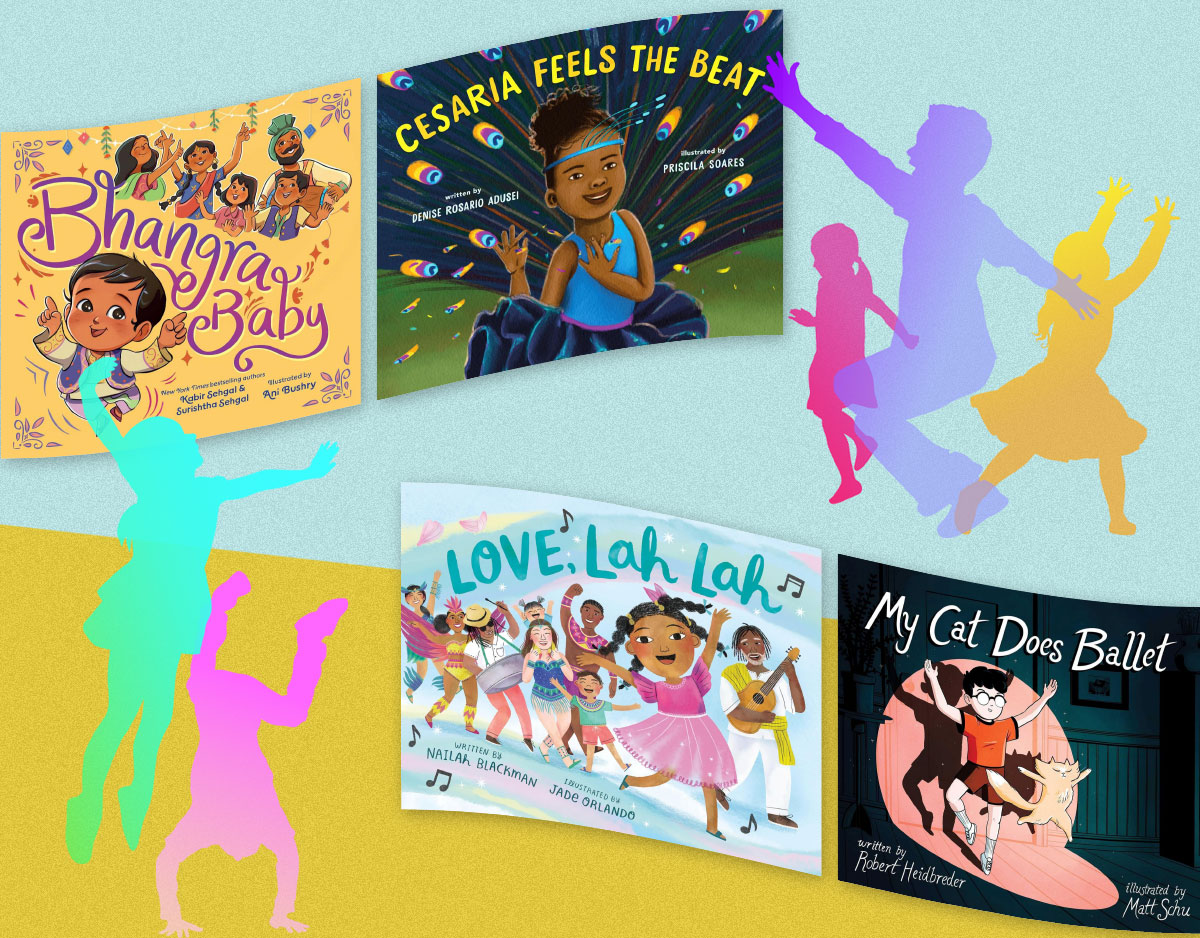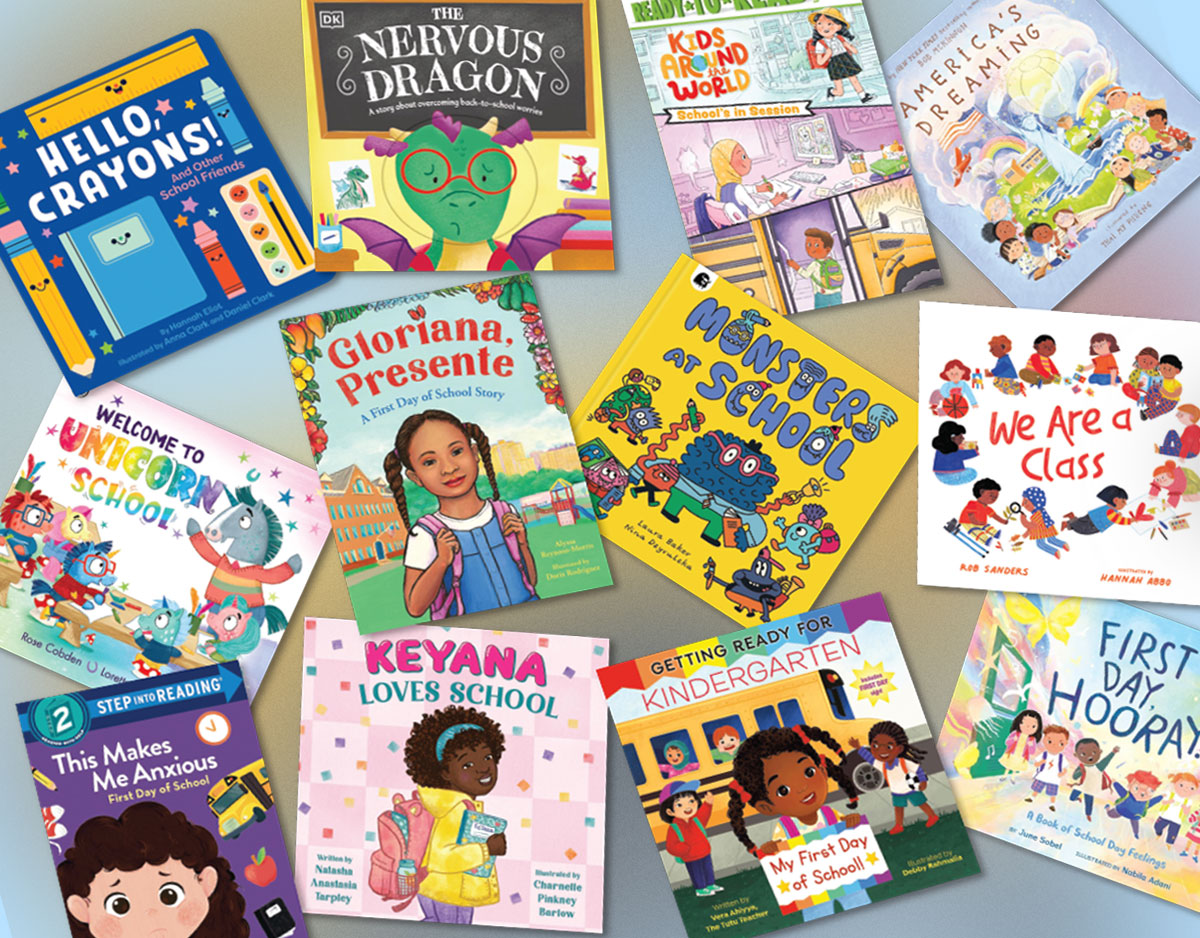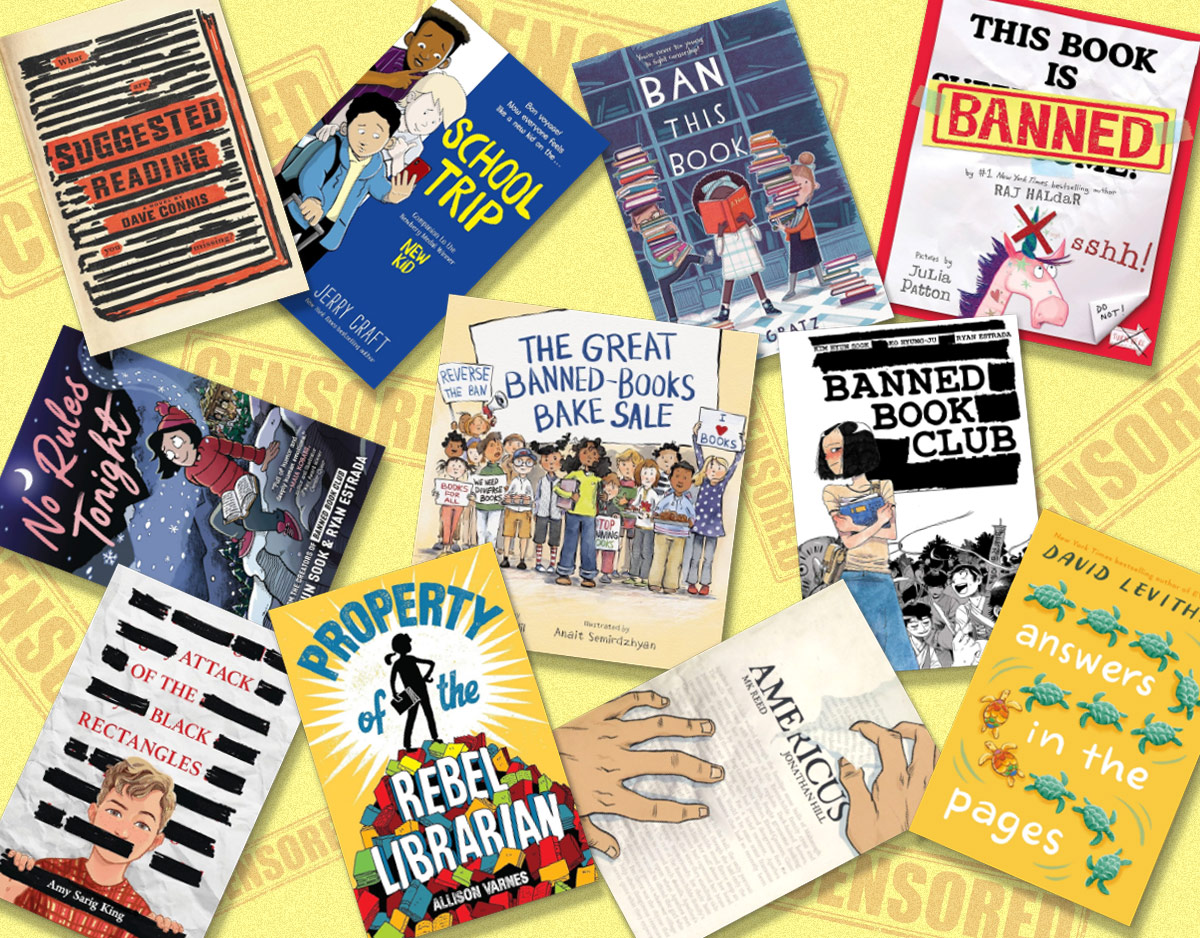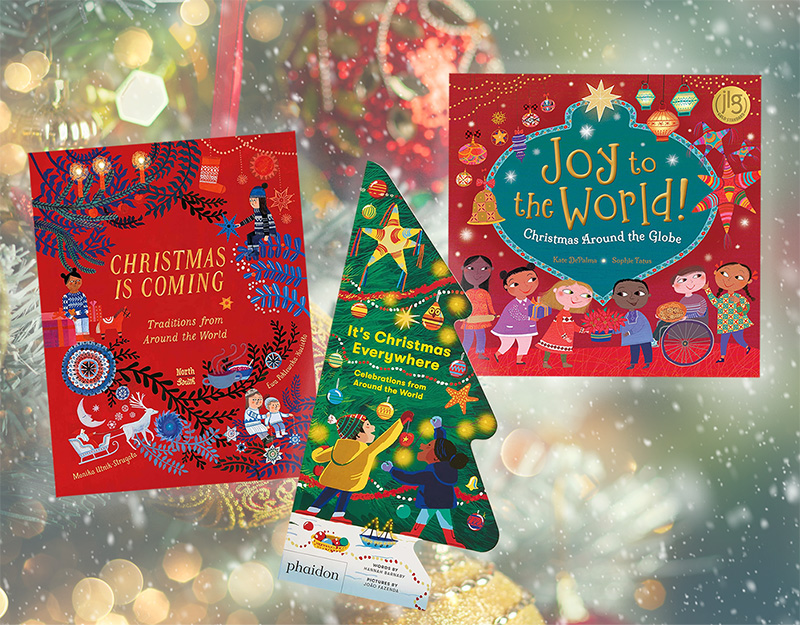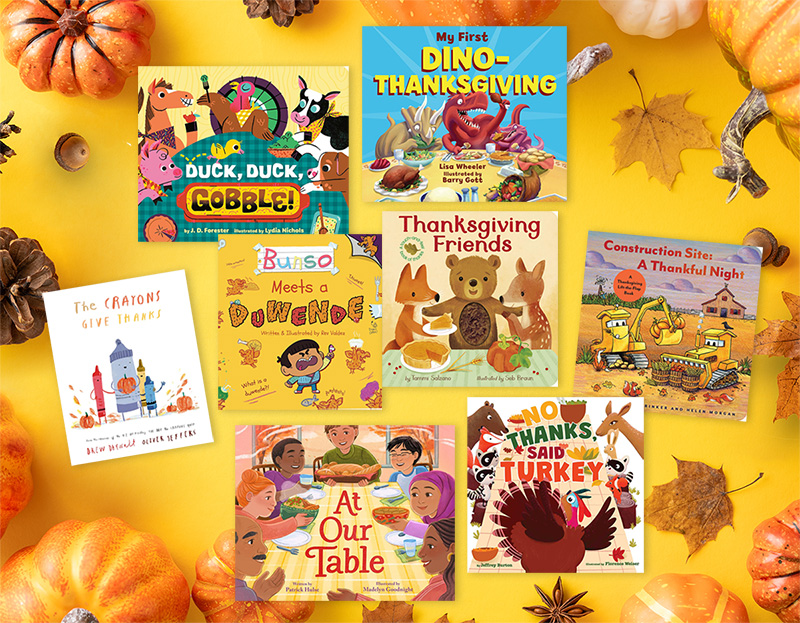Square (Shape Trilogy)
 Written by Mac Barnett; Illustrated by Jon Klassen
Written by Mac Barnett; Illustrated by Jon Klassen
Published in 2018 by Candlewick Books
ISBN 978-0763696078
Book Review
What does it mean to be an artist? Does it mean you have innate talent? Commit yourself to hard work? Are recognized as an artist by someone else? Or, maybe even something else altogether? Masters of the idiosyncratic picture book, Mac Barnett and Jon Klassen, have partnered again for the second eponymous book in their artful shape trilogy, Square. Fans of The Wolf, the Duck, and the Mouse, Sam and Dave Dig a Hole, Extra Yarn, and their previous shape book, Triangle, will be delighted by this award-winning duo’s latest work. Square is, well, square. He has qualities you would imagine a square that comes to life would have. He is solid, sturdy, and seems to enjoy having a certain dependability about him. He works day after day bringing blocks up to a pile at the top of a hill. One day, Circle comes by and interprets Square’s work as artistic genius, setting off feelings of self-doubt in Square. Sure to inspire smirks and smiles, Square is the story of an unlikely hero whose creative frustration is likely to ease the future frustrations of its readers. Rather than end the book with a concise moral, Square follows the traditional pattern of Barnett’s writing by trusting readers to engage in questions that come from an uncertain ending. Klassen’s minimalist graphite-and-watercolor illustrations invite curiosity and rereading. Full of read-aloud, shared reading, artistic, and writing possibilities, Square and its predecessor Triangle are must-haves for classrooms that seek to inspire readers through joyful, deep thinking coupled with hilarity.
Grades PreK – Grade 3
Teaching Ideas: Invitations for Your Classroom
Laughing Out Loud: Inferring Character’s Situations. Pair Square with Barnett and Klassen’s earlier eponymous book, Triangle. In repeated readings, support students to pay attention to moments in the books where they laugh out loud. These are likely places where characters are getting into mischief by tricking one another or where characters misunderstand each other or a situation. Rather than make these situations obvious for readers, Barnett and Klassen trust readers to make essential inferences to fully understand the characters, their dilemmas, and their triumphs. Gather other books by authors that also trust young readers to make inferences about humorous situations between characters such as Arnold Lobel’s Frog and Toad series and Mo Willems’ Knuffle Bunny trilogy or Elephant and Piggie series. Remind students throughout the year that their laugher is often a handy signpost for the kinds of inferences authors trust readers to make about characters and the situations they find themselves in.
ADVERTISEMENT
ADVERTISEMENT
Inferring Character and Plot through Illustration: . Before reading this book with students, do a picture walk of the illustrations, emphasizing that attention must be paid to the characters’ eyes, the landscape, and colors. What do students notice about each shape’s gaze? At whom is each shape looking? What inferences can they make about the personality of square and circle based on the illustrations? How does Klassen also use color to convey character? Finally, make sure that students look closely at the bits of scenery that Klassen provides. What changes do they notice? Can they figure out why those changes occurred? In other words, what happens in the story that isn’t narrated or revealed directly through the text? Have students apply what they notice to their own illustrations throughout the year with particular attention to characters’ eyes, their use of color, and their landscapes. (note: this teaching invitation originally appeared in the Classroom Bookshelf entry for Klassen’s This Is Not My Hat)
Creating Characters We Care About: Thoughts, Faults, and Insecurities. What makes a character believable? What makes a character feel human even if they are a shape? Explore these questions with students using Square (and Triangle) as a guide. Part of what makes Square such an endearing character is that he is an unlikely hero. We root for him throughout the story (as we do in Triangle as well). Create a concept map for each character by mapping with students the thoughts, faults, and insecurities of each character to help reveal what makes them feel human, even heroic. As students construct their own narratives throughout the year, remind them that their readers will connect to characters more if their thoughts are explicit, if they are imperfect, and if they reveal their insecurities through words and illustrations (such as through their eyes).
Introduction to Symbolism: Making Sense of Shapes through Movement and Teamwork. When we view certain shapes, there are associations we make as viewers. Before reading any of the shape trilogy books, draw a triangle, square, and circle on different pieces of paper and hang them in different corners of the room. Invite students to move to the shape they like the most. Give students at each shape markers to record what they like about that shape. Then, gather everyone back together to explore the kinds of associations students generated based on the qualities of each shape. After reading Square, look back at the lists students made. How did Barnett and Klassen use the associations people usually make about shapes to create their characters? How is Square squarish not only in shape but in personality? Apply the same question for circle (as well as triangle if Triangle is also available). For upper elementary students, introduce the term symbolism using the shapes in Barnett and Klassen’s trilogy as an example they can remember for years to come. Extend student learning by introduce some of the shape theories Molly Bang explores in her book Picture This. For example, did you know that smooth, flat, horizontal shapes give us a sense of stability and calm while diagonal shapes are dynamic because they create a sense of motion or tension.
Writing Endings: Questions instead of Lessons. Barnett and Klassen’s body of work traditionally leaves readers with a compelling question that challenges our previous understandings of the characters. In Square, the final page asks, “But was he really?” while Triangle concludes with the question, “But do you really believe him?” Discuss with students why they think Barnett decided to end these books with a question rather than a lesson we should learn from the characters as many stories do. Encourage students as they write their own narratives to end their own stories with similar types of questions if they want their readers to draw their own conclusions.
Creative Frustration: Getting Stuck and Unstuck. Square explores what we mean by artistic genius but it also explores the artistic process and the inevitability of feeling stuck. Use Square as a mentor text for the artistic process in writer’s workshop. What causes Square to feel frustration? What does he do to get “unstuck”? How does Circle unintentionally create feelings of frustration in Square? In the end, how does she unintentionally (again) help alleviate these feelings of frustration? Have students share the strategies they have for when they feel stuck as a writer or artist or at other times in their lives. Honor the reality that feeling frustration is simply part of being human. Using shared or interactive writing, create a class anchor chart these strategies for future reference. Gather other books to create a text set that explores the inevitability of frustration and strategies for moving past this natural emotion such as Peter Reynolds’ Ish, The Dot, and Sky Color; Barney Saltzberg’s Beautiful Oops; Corinna Luyken’s The Book of Mistakes; Patricia and Emily MacLachlan’s book Painting the Wind; Scott Magoon’s Hugo and Miles In I’ve Painted Everything; and Oliver Jeffers’ Stuck.
Opinion and Evidence: Debating the Genius of Square. After reading, Square, have students agree or disagree with the statement: Square is a genius. Have students pair up with someone who has a different point of view. Encourage students to elaborate on their opinions with evidence from the text as well as evidence from their own life if they have connections. At the end of the exercise, ask students if their opinions changed after hearing their partner’s reasoning. Make connections for students to the ways in which our opinions in life are often shaped by the opinions of those around us and that being willing to change your opinion after hearing logical evidence is a sign of strength. Extend this concept by reading books like They All Saw a Cat by Brendan Wenzel and Voices in the Park by Anthony Browne which both play with the concept of interpretation.
ADVERTISEMENT
ADVERTISEMENT
Choose a Shape, Any Shape: Partner Writing and Illustrating. Have students pair up in author, illustrator teams to write their own shape book. First, review various shape names with students using visuals. Then, have partnerships choose a shape together. Next, have students discuss possible personality traits for the shape. After that, have students discuss a possible storyline for what kind of trouble the shape could get into (perhaps involving other shapes) and how they can get out of that trouble by the end of the story. Before their writing and illustrating begins, reread Square and discuss what students notice about the writing and illustration choices Barnett and Klassen made that they can use in their own work. When students finish their partnership pieces, have a shape celebration where they share their work and explain their process as writers, illustrators, and partners.
Get Moving: Become the Characters to Better Understand. The books in the shape trilogy are ripe for opportunities to have students reenact the text by using their bodies and voices to become the characters. Pair students into groups of two or three to play the parts of square, circle, and triangle (if the book Triangle is available). Give them opportunities to review the books to think about how they can work together to become the characters and tell the story based on their own interpretations of what an audience needs to understand. Encourage them to think about how they position their eyes, how they stand or slump, and how they interact with each other to project the characters’ fears and successes. Have groups share their dramatic interpretations with one another followed by compliments for each other’s performances.
Author-Illustrator Study. Gather other books by Barnett and Klassen including works they have collaborated on as well as works they have created on their own or with others such as The Wolf, the Duck, and the Mouse, Sam and Dave Dig a Hole, Extra Yarn, I Want My Hat Back, and their previous shape book, Triangle. What patterns do they notice about the storylines, characters, plot points, and book endings that they would like to use in their own writing? What patterns do they notice in Klassen’s illustration style that they would like to emulate in their own work such as the way he draws eyes, use of shape, use of color, and white space? Engage in a class discussion to generate questions for Barnett and Klassen about their books, the characters, or their process. Send them those questions via their publishers or through Twitter to see if they respond.
Critical Literacy
Pressures for Perfection. While Circle only means to compliment Square, her words send Square into a pressured spiral towards perfection. Discuss with students the ways words (including the words of adults) can create feelings of pressure. Have students share times they felt pressured to get something right or to do a good job even if they were unsure of how to do that. What if someone else puts pressure on us? What words and actions can we use to help others realize their unintentional impact? Let students know that everyone feels pressure sometimes either stemming from others or by pressuring ourselves. Give students strategies for moving beyond those pressures by practicing various breathing techniques to empower, calm and self-regulate. Give students language they can use for when they feel pressured particularly by someone older than them. Also teach students various power poses like having their hands on their hips or their arms in the air as ways to make themselves feel powerful even when they feel uncertain or full of self-doubt.
Further Explorations
Online Resources
Mac Barnett’s website
Barnett on Twitter
@macbarnett
Jon Klassen’s website
Jon Klassen’s blog
http://jonklassen.blogspot.com/
Klassen on Twitter
@burstofbeaden
NPR: My First Existential Crisis: The Sweet Story of An Angsty Square
Breathing Exercises for Kids
Books
Barnett, M. (2017). Triangle. Ill. by J. Klassen. Somerville, MA: Candlewick Press.
Barnett, M. (2017). The wolf, the duck, and the mouse. Somerville, MA: Candlewick Press.
Barnett, M. (2014). Sam and Dave dig a hole. Ill. by J. Klassen. Somerville, MA: Candlewick Press.
Barnett, M. (2012). Extra yarn. Ill. by J. Klassen. New York: Balzer & Bray.
Browne, A. (2001). Voices in the park. New York, NY: DK Publishing.
Jeffers, O. (2011). Stuck. New York, NY: Philomel Books.
Klassen, J. (2011). I want my hat back. Somerville, MA: Candlewick Press.
Luyken, C. (2017). The book of mistakes. New York, NY: Dial Books.
MacLachlan’s, P. & MacLachlan, E. (2006). Painting the wind. New York, NY: HarperCollins.
Magoon, S. (2007). Hugo and Miles in I’ve painted everything. Boston, MA: HMH for Young Readers.
Reynolds, P. (2003). The dot. Somerville, MA: Candlewick.
Reynolds, P. (2004). Ish. Somerville, MA: Candlewick.
Reynolds, P. (2012). Sky color. Somerville, MA: Candlewick.
Saltzberg, B. (2010). Beautiful oops. Workman Publishing Group.
Wenzel, B. (2016). They all saw a cat. San Francisco, CA: Chronicle Books.
Filed under: Fiction, Fiction Picture Books, Picture Books
About Katie Cunningham
Katie is a Professor of Literacy and English Education at Manhattanville College. There she is also the Director of the Advanced Certificate Program in Social and Emotional Learning and Whole Child Education. Her work focuses on children’s literature, joyful literacy methods, and literacy leadership. Katie is the author of Story: Still the Heart of Literacy Learning and co-author of Literacy Leadership in Changing Schools. Her book Start with Joy: Designing Literacy Learning for Student Happiness will be released September 2019. She is passionate about the power of stories to transform lives.
ADVERTISEMENT
ADVERTISEMENT
SLJ Blog Network
Exclusive CASE Cover Reveal for JIM! by Jerrold Connors
Exclusive Spotlight: All Eyes on JIM! A Jerrold Connors Q&A on James Marshall
Fresh Start | Review
Heavy Medal Mock Newbery Finalist: A STRANGE THING HAPPENED IN CHERRY HALL by Jasmine Warga
When Book Bans are a Form of Discrimination, What is the Path to Justice?
Science is Messy, Wild, and Weird, Just Like Kids Themselves, a guest post by Christina Couch
Our 2025 Preview Episode!
ADVERTISEMENT



